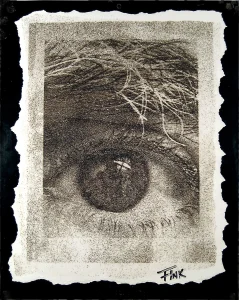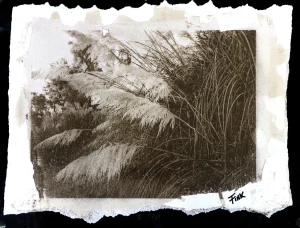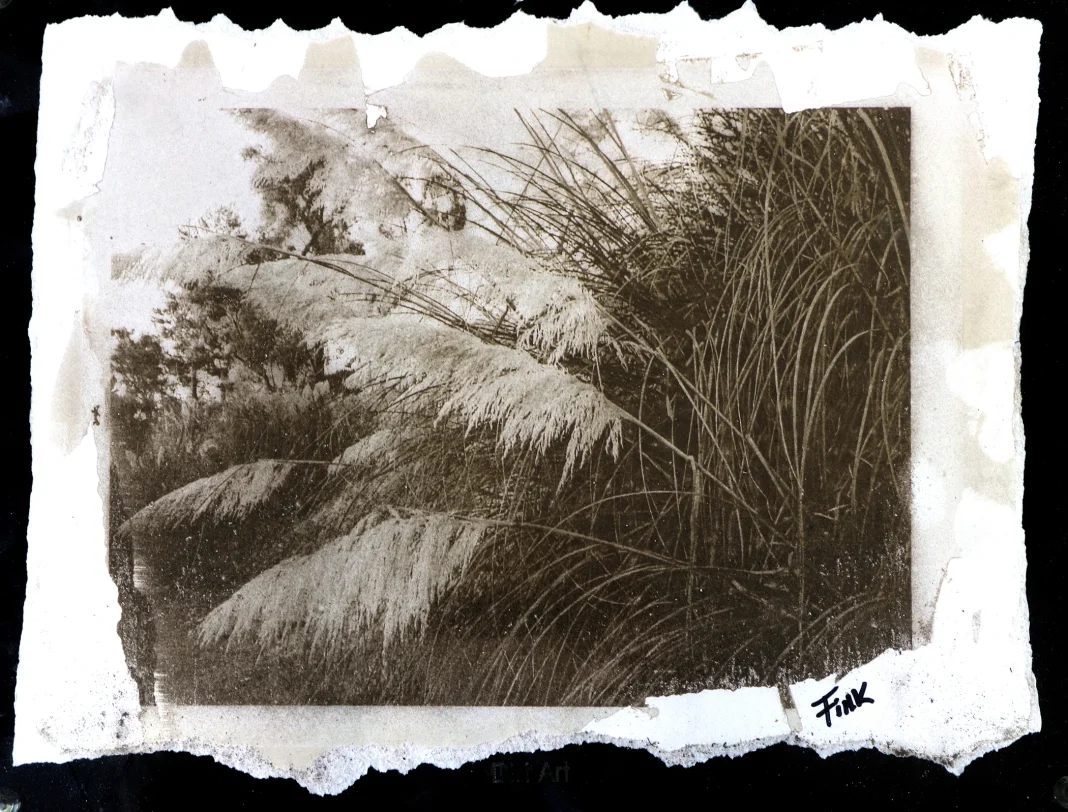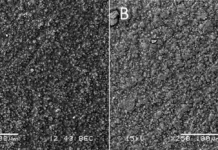By Liz Stevens, writer, UV+EB Technology
In addition to its value in commercial curing applications, UV’s scientific and medical values are well established, and this slice of the electromagnetic spectrum is becoming a household word. UV, however, enjoys a little-known double life at the intersection of science and art. UV+EB Technology spoke with a practitioner of scientific artwork or artistic science for a look at UV’s role in the world of art.
Bill Fink is a Los Angeles-based artist and a former part-time professor at Pasadena City College, with a BA in liberal studies from Cal Poly Pomona. He is a journeyman lithographer, a photographer, a printmaker and an experimentalist in photo hot glassmaking, ceramic relief and chiaroscuro photo watermarked handmade papermaking. He has founded a 501(c)(3) organization to promote these and other artistic ideas.
“Unlike what is produced with inkjet and conventional photography,” said Fink, “I make one-of-a-kind artwork or extremely limited editions, especially when the pictures are made of the subject matter itself or other unusual materials.” Fink calls his UV photo print process Time and Matter Photography, a method that pairs a moment in time with carefully chosen material matter to make the picture itself, and that offers a new way of thinking about photographing subject matter.
“One day, when experimenting with some UV materials,” Fink said, “I noticed something unusual happening and wondered if I could utilize the UV-curable materials so I could make original fine art.” After many years of experimenting, Fink had a solo exhibit of his UV art at the LA City Lankershim Art Center. In a proprietary process, Fink modifies and makes his own photo print UV emulsions (which can be polymer-based or acrylic) and base materials, and he uses UV bulbs, tubes and LEDs with wavelengths ranging on average from 240 to 360 nm and exposure times running from 10 seconds to two minutes.
Some other artists use UV and EB in their photography. Pierre-Louis Ferrer’s ultraviolet photography reveals details of human skin that are otherwise invisible. Craig Burrows takes photos of flowers and plants using UV-induced visible fluorescence. David Scharf uses electron beam for his photos, and Jess Holz uses electron beam to make her stunning art. Bill Fink’s aim, however, is to expand beyond conventional photography or inkjet by adding a new dimension to his photography with pictures made of nearly any matter or – best of all – to create pictures that are made entirely of the photo subject’s matter. The matter might be plants, hair, soil, ashes, eggshells, pollen, rust, rocks, precious metals, medications or the nearly endless matter around us.

Fink made the close-up picture of his eye (shown here) entirely of his own hair. “If the actual matter from the subject being photographed is used to create the picture,” said Fink, “it extends photography to a new level. In 1991, I photographed a man named Bob who was dying of AIDS. Bob arranged to permit me, upon his death, to use some of his cremation ashes so I could make his ash memorial pictures.” Fink’s entry of Bob’s ash picture won first place for experimental photography at the Los Angeles County Fair.
With material that is wildly diverse, unique challenges can arise while preparing the matter for use as a picture. “The challenge is distinct for each different subject matter I choose,” said Fink, “and I think that also is part of what makes this process so interesting.” To make the picture “My Eye,” it took many years of experimenting to find the best way to prepare hair to produce a good picture. “I tried singeing my hair,” Fink explained, “cutting it, pulverizing it, ball milling it, freeze drying, dehydrating, using liquid nitrogen and so on.” Fink said that, in the end, most of the solutions for how to incorporate material into pictures end up being relatively simple, at least in retrospect.
“One of my ongoing picture works is in learning and discovering ways to improve the preservation of the color of plants and flowers,” said Fink. “I believe this issue will eventually be resolved by experimenting and by meeting people who have viable solutions.” Patience and perseverance are key, since it might take years before the eureka moment arrives and Fink can complete a project.
“One of the things that I think is important about art, maybe the most important thing,” said Fink, “is that it can open up dialog on subjects that need to be discussed.” Fink does not shy away from provocative subject matter because, for him, “in art, everything or almost everything should go, because art is a conversation for the visual images and all the subject matter around us can be part of the story.”
A lot of Fink’s current thinking revolves around expanding the consciousness of art viewers, turning more than just the art community and art lovers onto his unique photography, and finding new collaborators for future projects. He hopes to share his processes by inviting people who are experimenting with interesting materials to work toward a collaborative art project. Another goal is to teach his processes in schools and share his passion with art students. “I also think students studying in other fields could make interesting Time and Matter Photography using matter from their field of study or interest,” he said.

As for his own pursuits, Fink is looking to do a series of geological formation and landscape pictures made of the soil. Insects also are on his mind. “I have experimented with making pictures out of insects,” he said. “I would love to find an entomologist who is doing research studies on specific small insects and collaborate to create a large picture of an insect made entirely of thousands of that very insect, perhaps fruit flies or ants or mosquitos.” He also is interested in making a picture of a research scientist who is studying a specific insect – and make that person’s picture entirely of those insects.
“I created a picture of poppies made of morphine (derived from opium poppies), and a picture of the Hiroshima bombing victim Sadako made of uranium,” Fink said. “I can make pictures out of products or waste materials – regardless of the material – which can go a long way for making political statements with art.” In the vein of fun, novel and collectible art, Fink made a Time and Matter picture of the Star Trek character Captain Kirk by mixing sulfur, charcoal and saltpeter together as described in the television show episode in which Kirk mixed a gun powder material with which to kill the Gorn. “I also made a character picture of Popeye and Olive Oyl eating spinach,” he said, “and made their pictures entirely of spinach.”
During a time when NFTs (nonfungible tokens) featuring massive photo collages are the darlings of the online art universe, Bill Fink’s singular works stand out as complex, innovative and unique. Fink is happy to be one of the artists making that small number of photos that are rare, meaningful and treasured by using UV to create a new kind of photography and fine art. “I believe Time and Matter Photography can create a niche in the fine arts that captures the historical, DNA and essence of the subject photographed by making the picture from the subject matter,” said Fink. “Time and Matter Photography is a transformational art form.”
Fink is writing a book on how UV-curable materials are used to make his Time and Matter Photography and one-of-a-kind art.
For more information, visit https://en.wikipedia.org/wiki/William Fink or email billfinksos@yahoo.com.






